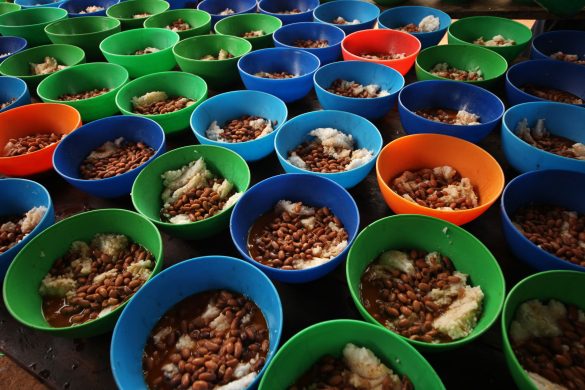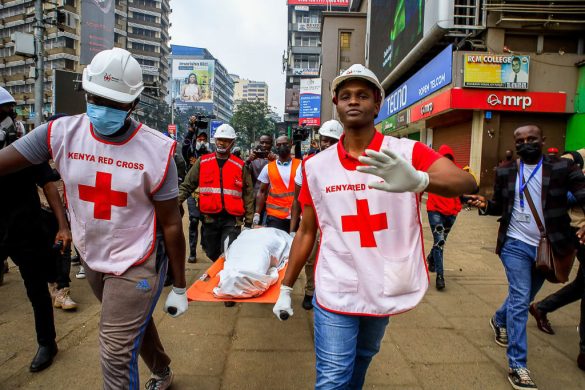Hvordan vil udviklingen være i den brasilianske del af Amazonas? Vil den nye indonesiske præsident indfri løfter om at bevare skov? Og vil verdens ledere levere en fyldestgørende aftale om klimaet? 2015 bliver et vigtigt år for skov. Her er 10 vigtige punkter for skov i det nye år.
Det skriver miljøsiden Mongabay fredag.
2014 was a landmark year for tropical rainforests, with dozens of major companies committing to eliminating deforestation from their supply chains, the launch of new platforms for monitoring forests, and sharp drop in clearing in the Brazilian Amazon, among other big developments. Here’s a quick look ahead at what might be in store for tropical forests in 2015.
1. Zero deforestation commitments
After rapid adoption of zero deforestation policies by producers, traders, and buyers in the palm oil sector during 2014, the focus in 2015 may turn to implementation and policy. Remaining holdouts, like pulp and paper giant Asia Pacific Resources Limited International (APRIL), will face intensifying calls to cut natural forest conversion from their supply chains.
One key issue will be how civil society groups respond to inevitable missteps by companies. Full disclosure on unintentional slip-ups will see more constructive responses than deliberate breaches or attempts to mislead. Activists will be quick to call out what they perceive as “greenwashing”.
Another area to watch is whether companies start to push for government policies to support their commitments. “Leveling the playing field” for these early movers may include land-swap mechanisms that allow companies to trade forested lands within their concessions for non-forest land elsewhere, access to credit and other financial incentives, and stepped-up enforcement of environmental laws.
The Kadin pledge — where four companies called on the Indonesian government to support policies that reduce deforestation and peatlands destruction — may be a model.
2. Jokowi’s forest commitments
Indonesia will remain in the spotlight in 2015 as new president Joko Widodo, popularly known as Jokowi, takes on the challenge of reforming the forestry sector.
Look for greater scrutiny of concession licenses, especially in peatland areas, as well as a crackdown on forestry-related corruption. Within the bureaucracy, the dynamics of the newly merged Ministry of Forestry and Ministry of Environment are still far from clear — will the new institution foster a shift away from business-as-usual approaches to forest management? And how will it work with the REDD+ agency charged with developing mechanisms for performance-based conservation?
Other areas to watch in Indonesia in 2014: second- and third-tier palm oil producers that have largely avoid civil society pressure to move toward less damaging practices; government mandates for palm oil-based biofuels; the Recognition and Verification of Rights scheme (PPH), an effort to verify ownership of 66.3 million hectares of disputed forest land by the end of the year; provincial level programs to curb deforestation like Central Kalimantan’s pilot project under the Governors’ Climate and Forests Fund; and developments with Aceh’s spatial plan revision.
3. What’s happening in the Brazilian Amazon?
Brazilian government data showed that deforestation in the Brazilian Amazon resumed its downward trajectory for the 12 months ended July 31, 2014, but there are worrying signs that the progress may not last. Data from Imazon, a Brazilian NGO, shows that deforestation since the end of July is sharply outpacing the year-earlier rate.
Meanwhile proposed amendments could allow protected and indigenous territories to be opened to mining and energy extraction. Finally, senator Katia Abreu, who environmentalists have called “the Chainsaw Queen” and “Miss Deforestation” for her support of agribusiness and push to weaken environmental laws, has just been appointed as Minister of Agriculture.
4. Will Paris produce a binding climate framework?
Climate talks at the end of the year in Paris are supposed to establish a new framework to address climate change. Reducing Emissions from Deforestation and Forest Degradation (REDD+) is expected to have a central role in that agreement, but questions still remain about REDD+.
These include whether there will be sufficient safeguards to protect biodiversity, the rights of forest-dependent communities, and native ecosystems like old-growth forests and woody grasslands. At the same time, REDD+ project developers are worried that the market for forest carbon may fall far short of expectations.
Læs videre på Mongabay: http://news.mongabay.com/2015/0102-what-to-expect-for-rainforests-in-2015.html














